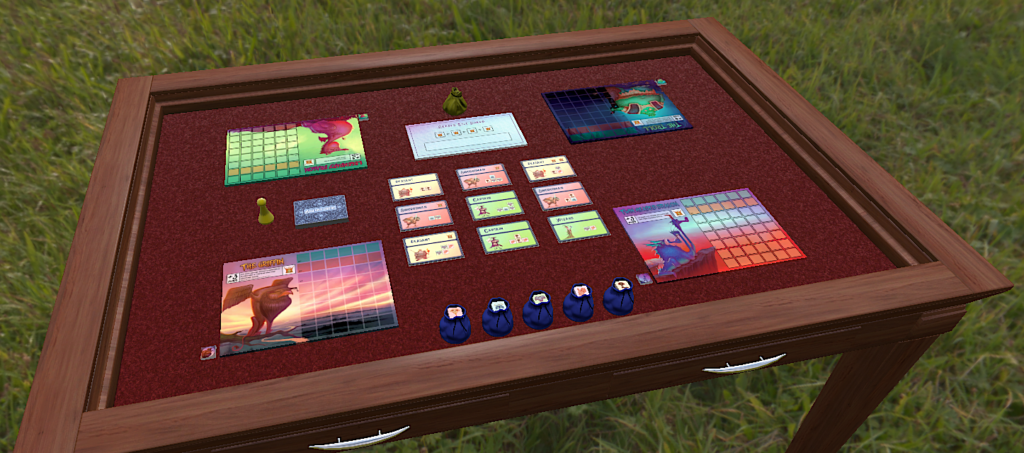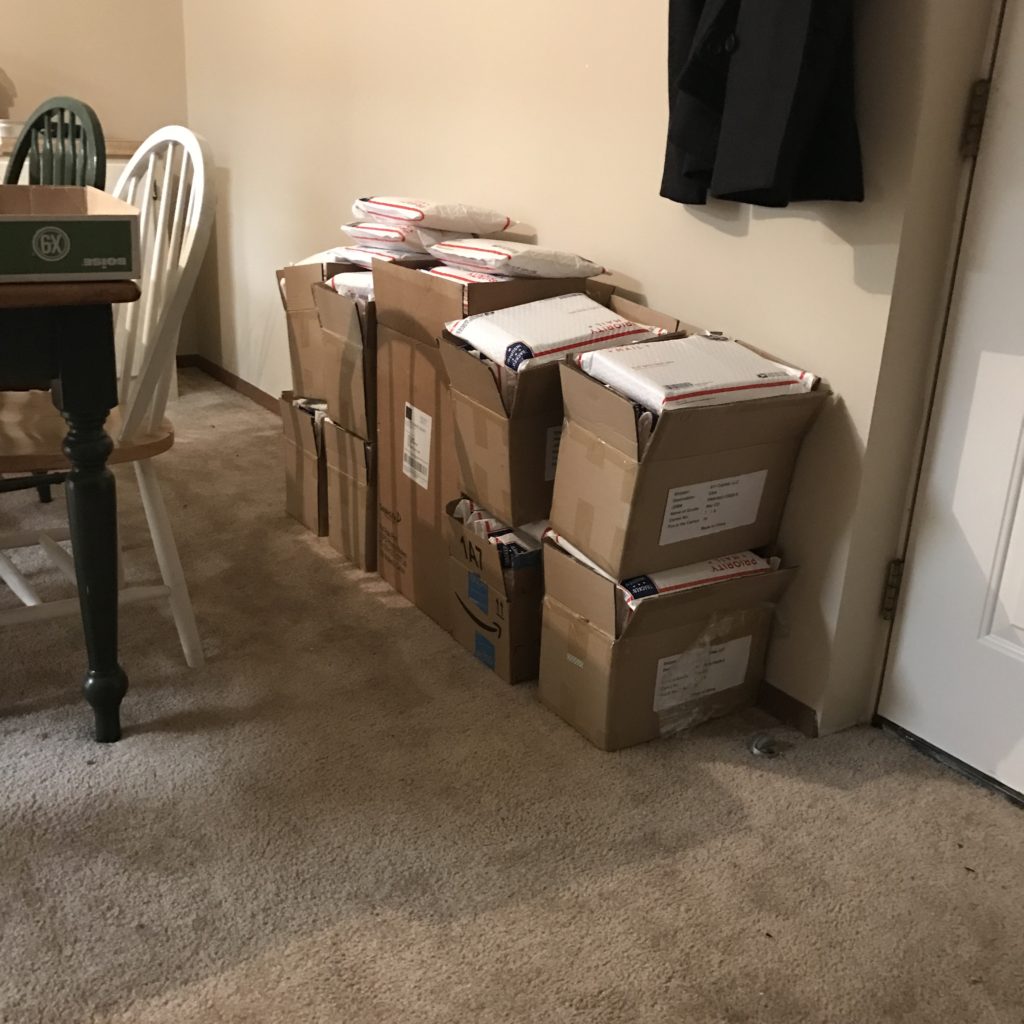Last week, I posted A Crash Course in Games, where I acted as a tour guide to the board game industry, covering much of the contextual information you’ll need to make games. Let’s pick up from there and talk about what specifically goes into making a game. What is board game development all about?
Need help on your board game?
Looking for more resources to help you on your board game design journey?
I tend to use the word game development as a catch-all term for everything that is associated with making a game – that includes game design, product development, marketing, promotion, Kickstarter/crowdfunding, fulfillment, and selling. I use “game development” to describe “the entire creative process of creating a game from start to finish” the same way people say “the White House” to refer to “the United States government.”
So what goes into game development? Let’s break it down…
Board Game Development: Game Design
When people think of board game development, they’re probably thinking of board game design. The processes associated with creating the actual game itself – the way it plays and feels – fall under the purview of game design. Game design involves creating a game with a core engine that drives the gameplay at a fundamental level. It involves creating mechanics that determine how players interact with the game. It involves creating rules which define objectives and constraints that keep the player focused on certain goals and make it difficult for them to reach them.

Game design also involves a lot of play-testing. Throughout the game design process, you’ll be playing versions of your game, most of which will be horribly broken. You’ll start out playing your game by yourself, simulating other players. Then you’ll start play-testing within a close circle of associates. Once you confirm that your game is reasonably well polished, you’ll be able to play with disinterested strangers. When it’s almost ready to go, you’ll give your game to people who have never played it before and who do not have any help from you. That’s called blind play-testing.
This whole time, you’ll be making tweaks, improving your game here and there. Bear in mind, game design only covers aspects related to the game itself.
Related articles:
- How to Design the Core Engine of Your Board Game
- How to Play-Test the Core Engine of Your Board Game
- How to Design the Mechanics of Your Board Game
- How to Play-Test the Mechanics of Your Board Game
- How To Design the Rules of Your Board Game
- How To Play-Test the Rules of Your Board Game
Board Game Development: Game Production
Game production is the process of making sure that your freshly designed game becomes a physical product which is perceived well by others. This involves creating or buying art, doing accessibility testing, doing play-testing for factors not directly related to gameplay per se, buying samples, preparing the game for manufacturing, and manufacturing itself. The utopian ideal here is that your game will be beautiful, easy-to-use, physically attractive, and – most important – an actual thing that actually exists in the actual world (and not just your mind). Production is what takes a game design from pen and paper to the print shop. It’s also what makes a game design sell-able.
Related articles:
- How to Create Board Game Specs and Files for Your Printer
- How to Create Specs for Your Board Game Artist
- How to Find Artists for Your Board Game
- How to Manage Artists on a Board Game Project
- How to Find a Board Game Printer
- How to Order and Test Samples of Your Board Game
Board Game Development: Game Marketing & Promotion
Of course, games very seldom sell themselves. You’ll hear every once in a while about a game that flies off the shelf. You probably won’t be that person. (But please call me if you wind up being that person.)
Marketing and promotion is hard work, and you’ll want to start laying the groundwork as soon as you can. It involves creating a strategy, getting web traffic, using social media, using email newsletters, getting game reviews, going to conventions, doing live-streams, issuing press releases, and – most of all – networking. Marketing is about building relationships with people and you need lots of time to do this right. Talking to people is often the difference between selling a game and not selling a game.
Related articles:
- How to Choose & Use a Board Game Marketing Strategy that Works
- How to Use Content Marketing to Sell Board Games
- How to Rise Above the Noise of the Internet & Get Noticed
- How to Generate Traffic for Your Board Game Website
Board Game Development: Kickstarter
A lot of board game developers choose to go through Kickstarter for funding these days. Considering that you have a roughly 50/50 shot of success on the platform, that’s a pretty good idea. Kickstarter has become a de facto testing ground for new board game ideas. If you choose to use Kickstarter for board game development, there’s a lot that comes with that territory as well.

First, you need to spread the word early. Kickstarter is not square one. It is a loud rallying cry that is only useful if you already have an audience who is listening to you. Marketers would refer to it as a “call to action” – something that gets all the wallflowers in your audience to join the party (by throwing money at you online).
Of course, you need to put on your vanity glasses to deal with some preparation in addition to just schmoozing. You have to account for Kickstarter math (fees, taxes, and shipping). There is also the complex matter of making a great campaign page. Completing a Kickstarter requires fulfillment network, as well as creating timetables and coming up with a way to keep your promises. Planning the launch day is critical. You need to set stretch goals if you exceed your goal and come up with a back-up plan if you fall short. Expect to make regular updates. Some people opt to set up a pre-order system after their campaigns.
Related articles:
- Your Board Game Kickstarter: Why & How to Spread the Word Early
- Kickstarter Math: How to Deliver Your Board Game On-Time and Within Your Budget
- 5 Things I Wish I Knew About Law & Tax Before Kickstarting My Board Game
- How to Create the Perfect Board Game Kickstarter Campaign Page
- How to Order a Print Run for Your Board Game Kickstarter
- Fulfill Your Board Game Kickstarter: Sending Products Within the USA
Board Game Development: Selling
Let’s assume you create a great game, people like it, you Kickstart successfully, and people know your name. That still won’t sell your game. Trust me, I’ve learned this in the school of hard knocks! Selling involves creating a game that has something about it that makes people want to click Add to Cart or grab it off the game store shelf. That links back to production and marketing. There is also the matter of setting a price point that works for folks. You’ll probably find yourself thinking about advertising, conventions, selling to distributors, and direct selling to customers.
Then there is, of course, the matter of keeping momentum after your game’s release. This isn’t easy! It requires an ongoing effort that links back to your game’s design, production, and marketing.
Related articles:
- How to Make a Beautiful Board Game Box
- How to Price Your Board Game
- How to Keep the Hype Train Going After a Board Game Kickstarter
- How to Advertise Board Games Online
- How to Sell Your Board Game Outside of Kickstarter
Final Thoughts
I’ve just dropped so, so much information here that it would be easy to get intimidated, close the tab, and quit. However, it’s this great complexity that I feel compelled to detangle throughout the course of Start to Finish. Every single subject I’ve mentioned above – game design, production, marketing and promotion, Kickstarter, and selling – is something I feel comfortable talking about at length. We’ll walk through this together and go into all the details. We’ll get really into the weeds.
With an idea of what’s to come, you’ve already got a much better start than I ever had.





6 thoughts on “A Crash Course in Board Game Development”
Brandon, thanks for these posts. I’m in the process of creating my first game and this is super helpful. It’s interesting because I come from a digital marketing background – so creating campaigns, launching products, working with influencers to promote a product are all things that I have done.
I hope to use those skills when I finally launch my game. At this point I’m thinking something super simple played only with cards. I’ve learned to test fast and often – and not to get hung up on any ideas early on. Basically make a very lean product till you have traction and interest and start to create a buzz.
At the moment I’m mainly struggling with the mechanics of the game – which to me are the most important part.
Look forward to reading the entire series of posts.